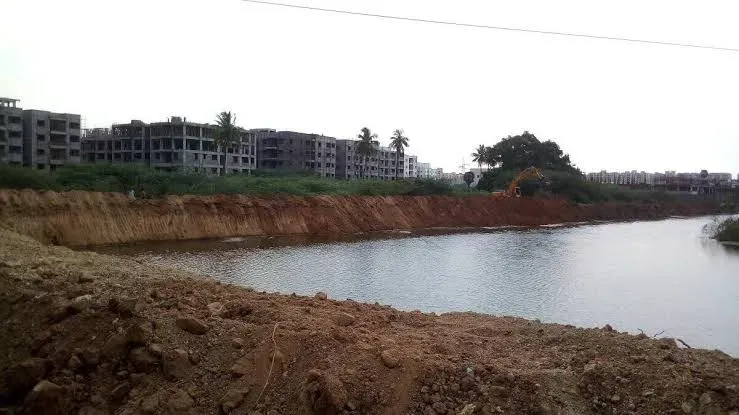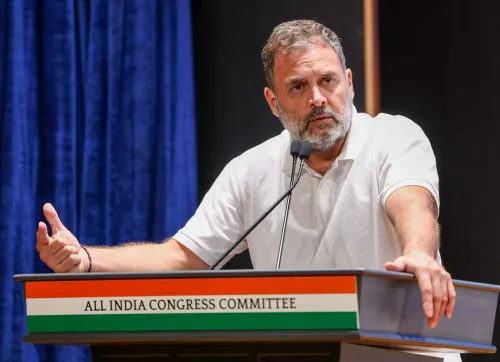How Is Tamil Nadu Reviving 3,900 Tanks Under a Major Restoration Initiative?

Synopsis
Key Takeaways
- 5,000 minor irrigation tanks targeted for rejuvenation.
- Collaboration with NGOs and voluntary organizations.
- Comprehensive measures including desilting and bund strengthening.
- Focus on sustainable and innovative techniques.
- Significant benefits for local communities and farmers.
Chennai, July 2 (NationPress) In a significant move aimed at bolstering water security and rejuvenating traditional water bodies, the Tamil Nadu Rural Development and Panchayat Raj Department has launched a bold initiative to restore nearly 5,000 minor irrigation tanks across the state.
The extensive restoration efforts are being executed through a combination of government funding and collaboration with voluntary organizations.
As per official reports, work has already started on approximately 3,260 tanks out of the total target of 5,000, with financial backing from the state government estimated at Rs 500 crore. Moreover, 706 tanks are undergoing restoration through various non-governmental organizations (NGOs) and voluntary agencies, costing around Rs 45.39 crore.
The main goal of this initiative is to increase the water storage capacity of these tanks through comprehensive restoration efforts, which encompass desilting, deepening, bund strengthening, and the incorporation of eco-friendly technologies for wastewater treatment and groundwater recharge.
Among the most proactive districts in this program is Chengalpattu, which boasts a dense network of water bodies. The district administration has initiated the ‘Mission Blue-Green Chengalpattu’, under which nearly 200 out of 500 identified minor irrigation tanks are being revitalized.
Officials from the District Rural Development Agency (DRDA) pointed out that many of these tanks had not been dredged for almost two decades. The district administration is also calling on voluntary organizations to apply for no-objection certificates to undertake rejuvenation efforts on an additional 388 tanks.
A key partner in this mission is the Environmentalist Foundation of India (EFI), which is devoted to restoring 100 minor irrigation tanks in the district.
“We are employing innovative and sustainable techniques. For example, at the Mannivakkam Tamaraithangal tank, a root-zone plant-based filtration system has been set up to naturally treat domestic wastewater and enhance groundwater recharge,” stated an official.
The DRDA aims to complete the majority of ongoing projects by early October, significantly boosting the water-holding capacity of the tanks prior to the northeast monsoon.
A civic activist from Chitlapakkam has urged the government to perform a thorough survey of water bodies and their catchment areas to prevent future encroachments and ensure effective planning.
“Restoration initiatives must be maintained and thoroughly documented to guarantee they benefit farmers and neighboring communities,” he commented.
Arun Krishnamurthy, the founder of EFI, mentioned that the organization is currently focused on reviving nearly 165 water bodies throughout Tamil Nadu. “Our strategy includes boundary demarcation, bund reinforcement using excavated silt, and creating nesting islands for birds. For tanks prone to flooding, we are installing recharge boxes and injection wells to enhance water retention and flood management,” he elaborated.
As part of these efforts, solar-powered aerators are being set up in 25 tanks, including Keelkattalai Lake, to improve water quality through increased oxygenation.
The rejuvenation initiatives are being executed in various water bodies like Ozhhalur Kadaperi, Polambakkam Periya Eri, Arasankazhani, Kalvoy Raman Eri, Rathinamangalam Eri, and Sonalur Thangal. Similar projects are also in progress in other districts, including Erode, Sivagangai, and Tiruvallur.
With a focus on sustainable revival and long-term ecological benefits, Tamil Nadu’s tank restoration initiative signifies a pivotal step toward safeguarding the state’s water future amid shifting climate patterns and increasing urbanization.









